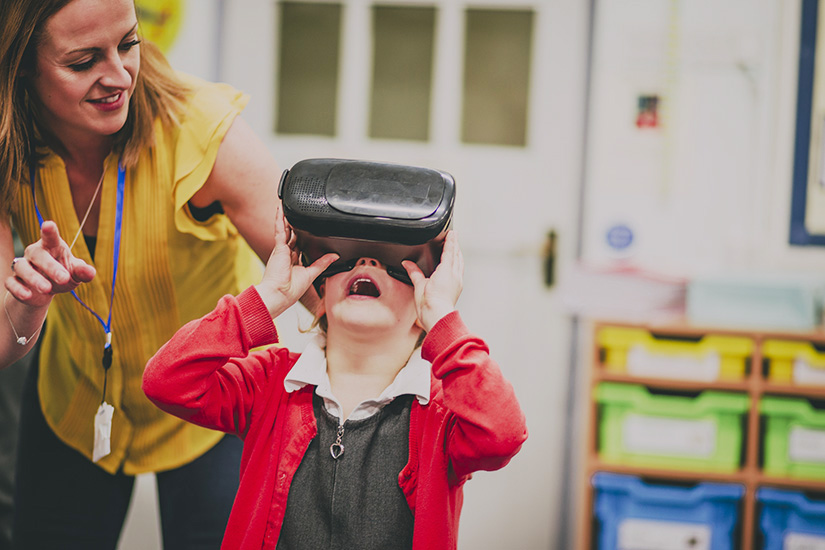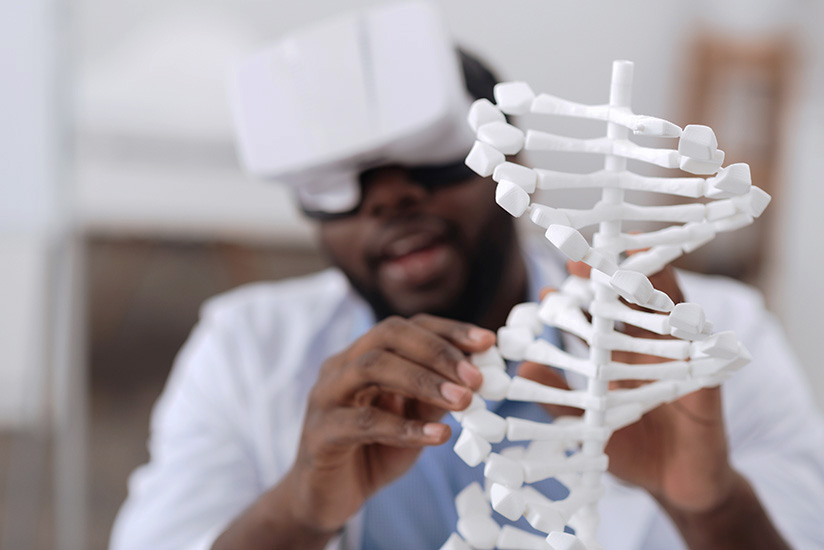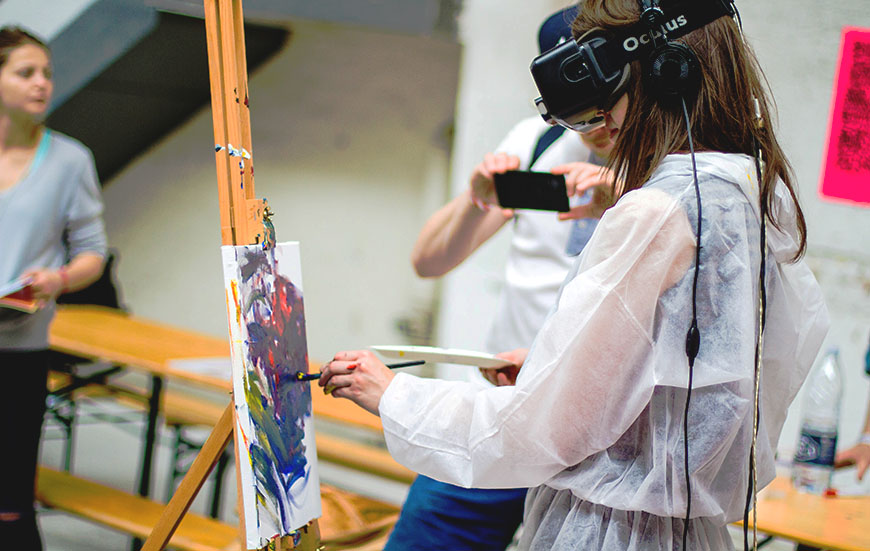VR is here, but it still feels like everyone is a little unsure about what to do with it. That hasn’t stopped a whole range of industries from picking it up and trying to adopt the new medium for their own. Virtual reality producers, creatives and engineers are having fun playing around, and just like in the beginnings of all new mediums, we see them experimenting and taking the platform into a number of fields.
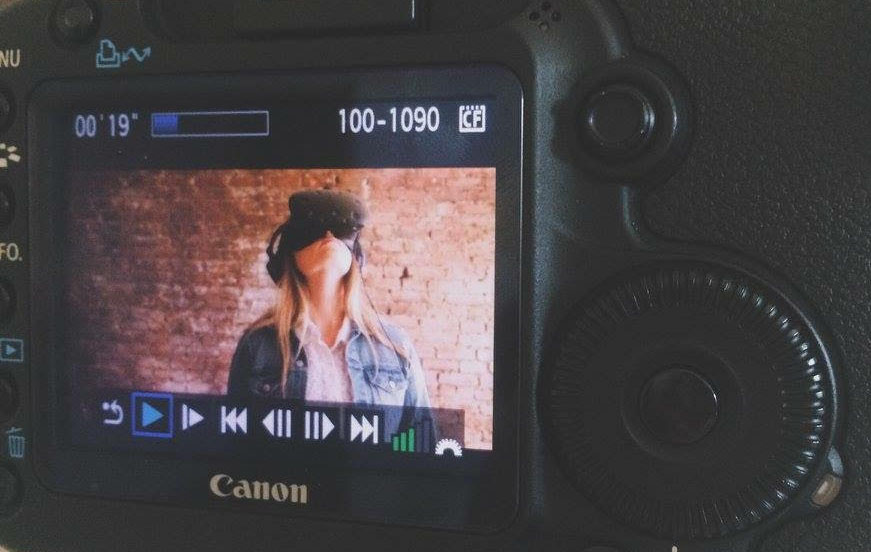 Having spent time working in the VR world (that’s me in VIVE headset), I confess that I am a big fan of virtual reality. Why wouldn’t I be? VR has given the world virtual theme parks, the latest craze for marriage proposals, future Wal-Mart employees the coolest training in employment history, and most significantly, it has given Seinfeld fans the opportunity to take an immersive tour of Jerry’s apartment. I admit, however, that I am a little sceptical of VR’s longevity in entertainment, I have no doubt that VR will revolutionise practices in education, the health sector, the military, the art world, and in construction and architecture.
Having spent time working in the VR world (that’s me in VIVE headset), I confess that I am a big fan of virtual reality. Why wouldn’t I be? VR has given the world virtual theme parks, the latest craze for marriage proposals, future Wal-Mart employees the coolest training in employment history, and most significantly, it has given Seinfeld fans the opportunity to take an immersive tour of Jerry’s apartment. I admit, however, that I am a little sceptical of VR’s longevity in entertainment, I have no doubt that VR will revolutionise practices in education, the health sector, the military, the art world, and in construction and architecture.
VR in Education
It is with complete confidence that I say, if VR had been around while I was in school, I would have paid 100% more attention in class. VR is creating a new approach to education and immersing students into their studies by taking them into the world they’re learning about. It is taking kids inside volcanoes and into space. Popular VR applications allow students to learn about stars, geography, climate, public speaking, space, anatomy, animals of the world, and art. It only makes sense to teach today’s tech-savvy kids through VR, one of the coolest technological advances in years.
VR in Health
Health and medical professionals are one of the biggest employers of VR. Through VR health specialists can visualize and test theories and procedures before taking them into the operating room, tempting faster, more impactful breakthroughs in medical advancements. It also allows medical students to learn outside of textbooks and 2D images, by taking them into 3D models that they interact with it, and not just read about it.
VR is offering patients to visualize their options and make more educated decisions. In particular, VR is helping patients of PTSDs and phobias by creating virtual spaces for people to concur fears. Through VR, patients are able to enter these spaces in a controlled environment and sufferers are able to adjust to their symptoms and develop coping strategies. This is referred to as ‘exposure therapy’ and it’s allowing patients to recount their traumas and visualise their fear while a doctor is present. I am all for this, but I am never going to be ok with being immersed in a world with spiders.
VR in the Military
The military is no stranger to VR. For years, the military has been using VR to create simulations and virtual boot camps. VR has been introduced into training regimes in the army, navy and air force. Through VR, soldiers can experience war zones in a controlled environment. It allows the military to put soldiers through a simulated situation before sending troops into the battlefield. When a soldier puts on a headset, they are able to explore the terrain, investigate scenarios and make decisions without consequences.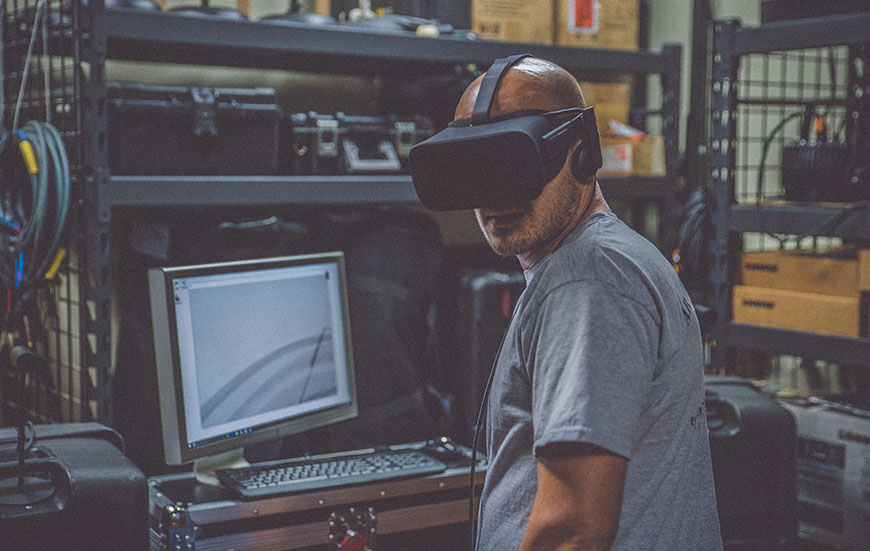
VR in Architecture, Construction and Real-estate
Through VR, architects, construction teams, real-estate agents and prospect buyers are able to inhabit virtually modelled spaces. VR is providing a simple solution for building and testing structures before plans are put into action. Thanks to VR, an architect’s ideas are no longer limited to drawing. Bringing VR to architecture and construction will help in streamlining the design process, minimising costs and increasing safety.
VR in the Art World
VR opens up a whole new door for artists. VR is a space for filmmakers, performers, dancers, illustrators, painters, sculptors, directors and curators. It has created an opportunity for them to push their practice into a virtual world. In recent years we have seen virtual museum exhibits and interactive theatre performances. And thanks to the likes of Youtube360 and Google’s Tiltbrush VR experience, anyone can be an artist in VR. Titlbrush allows people to walk around inside their drawings, it might just be my all time favourite VR experience. Here you can watch how 7 very unique artists are embracing VR in this experience –http://time.com/vr-is-for-artists/.
Virtual reality is creating opportunities in so many different fields, through VR audiences are put inside worlds they could only before have ever closed there eyes to dream about. I don’t have the answer for where VR belongs exactly, but I believe that it’s limits stretch beyond entertainment and it’s capabilities in education, health, the military, architecture and the art world are much more significant. VR, beyond entertainment.
Gabi Miles is a Producer at Sydney based video production company, Rocket Productions. You’ll find more useful articles on our blog.

